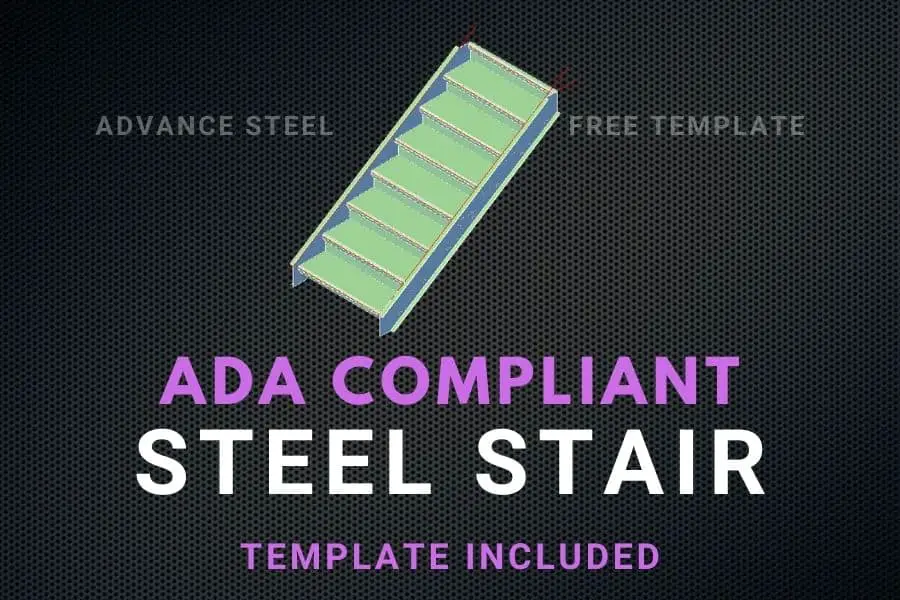If you need to make ADA-compliant steel stairs, you need to satisfy the following:
- Uniform raiser heights.
- Risers shall be a min of 4″ high and maximum of 7″ high.
- Open raisers are prohibited.
- Uniform tread width.
- Tread depth at a minimum of 11″.
- The nosing shall project no more than 1 ½″.
- The nosing shall not be abrupt. The radius of the nosing shall be no greater than 1 ½″.
- Raisers shall be sloped OR the underside of the nosing shall have an angle of no less than 60°.
- The surface must be firm, stable, and slip resistant.
- The stair width shall be 36″ between handrails.
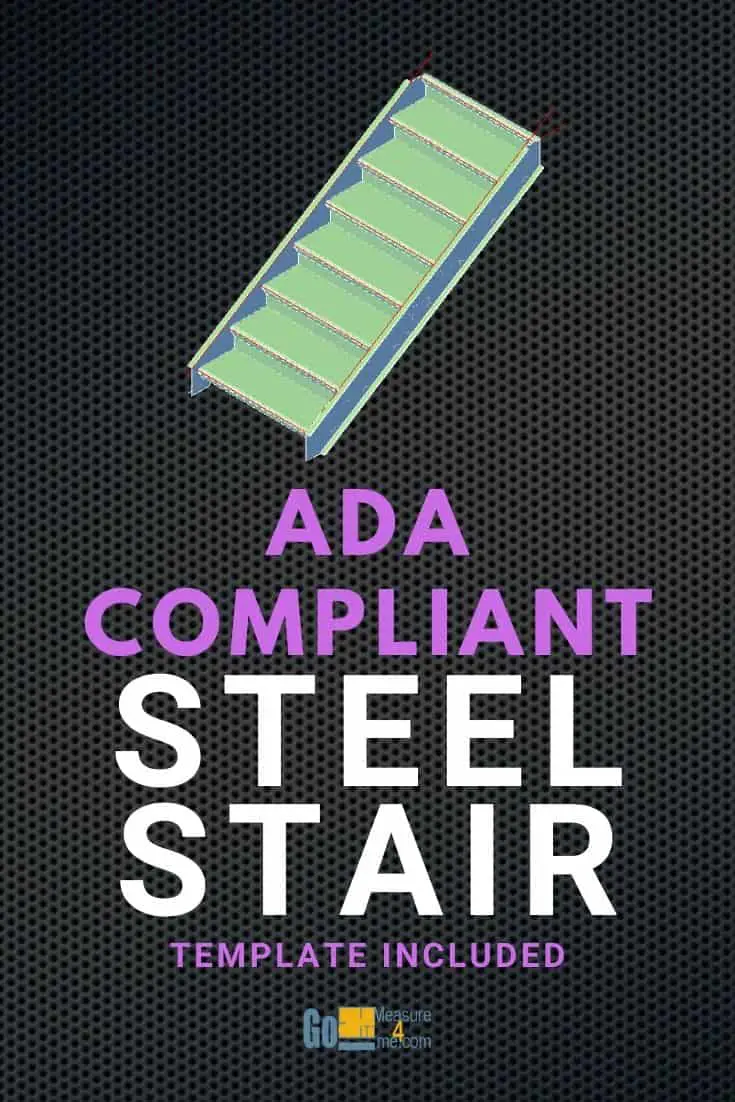
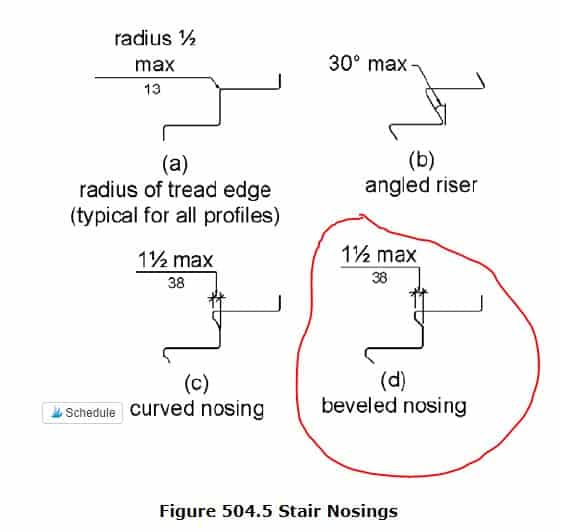
Railing has its own rules as well, but in this article, we will focus only on the stairs.
Sometimes space is limited and using an 11″ tread with no overhang could be problematic. Thankfully, you can get away with that and save some space by using 1 1/2″ nosing. This way, with eight steps, you will save 11×1.5″ = 16.5″.
I made simple stairs that take all the requirements into consideration. Here is how to make the stairs using a template I have created.
Download the ADA Steel Stairs Template
You can create your own stairs every time you need to make this kind and save it as a template, or you can use mine, available for download here in a zip format. It was made with Advance Steel’s 2022 version, so if you are using the newer version, the upgrade will happen.
Making the ADA Stairs Using a Template
You can watch a video that explains, step by step, how to make the stairs using the downloaded template:
- Draw 11″ rectangles, representing:
- 1 ½″ stringer
- 1 ½″ handrail clearance
- 1 ¼″ handrail diameter
- 36″ clearance between handrails
- Draw a line representing the height of the raiser (In this example, I will draw a 7″ line) on the inside of the stringer, like it is shown in the drawing below.

3. Once you have your basic stair design down, you need to multiply it to represent the required number of steps. The easiest way to do this is to group all the drawn rectangles. Remember to offset the steps by 1 ½″, so the step is 9 ½″ plus 1 ½″ nosing (totaling 11″):
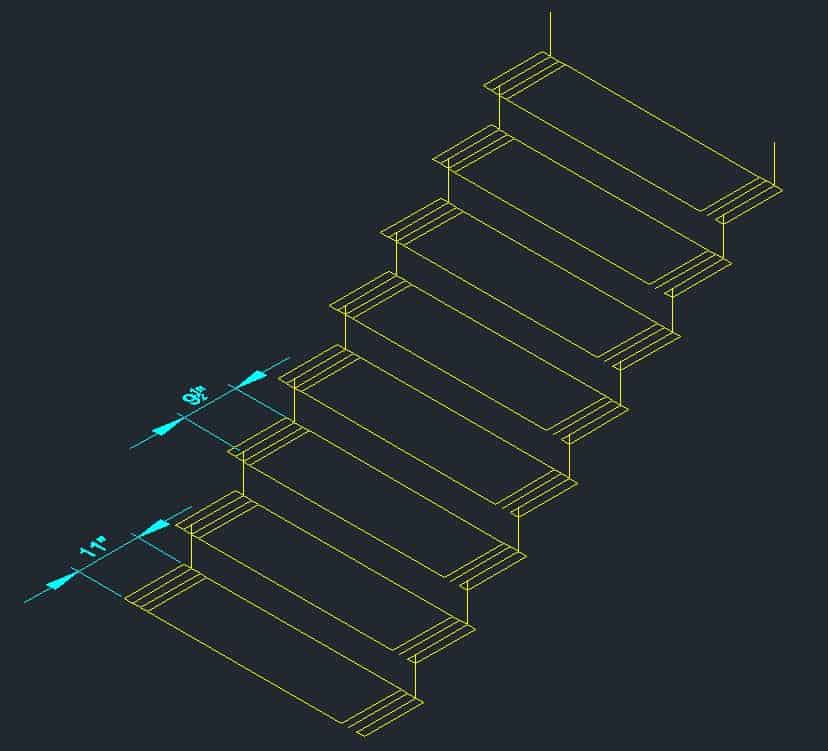
4. Go to the Advance Steel Toolbar at the top of your screen and look for the stair tool:
Home > Extended Modeling > Straight Stair

5. You will be asked how you want to make your stair; answer “0” and press Enter. This is the default option, and the stair will be created using Start and End points.

6. Next, you will be asked to specify the first (bottom) point of the stair. Assign the point at the bottom of the stair.
7. Then you will be asked to specify the second (a top one). Assign the point at the top.
8. And lastly, you will be asked about the alignment of the stair. Choose the Right=2 option. The stair will be created. and a dialog box will open:
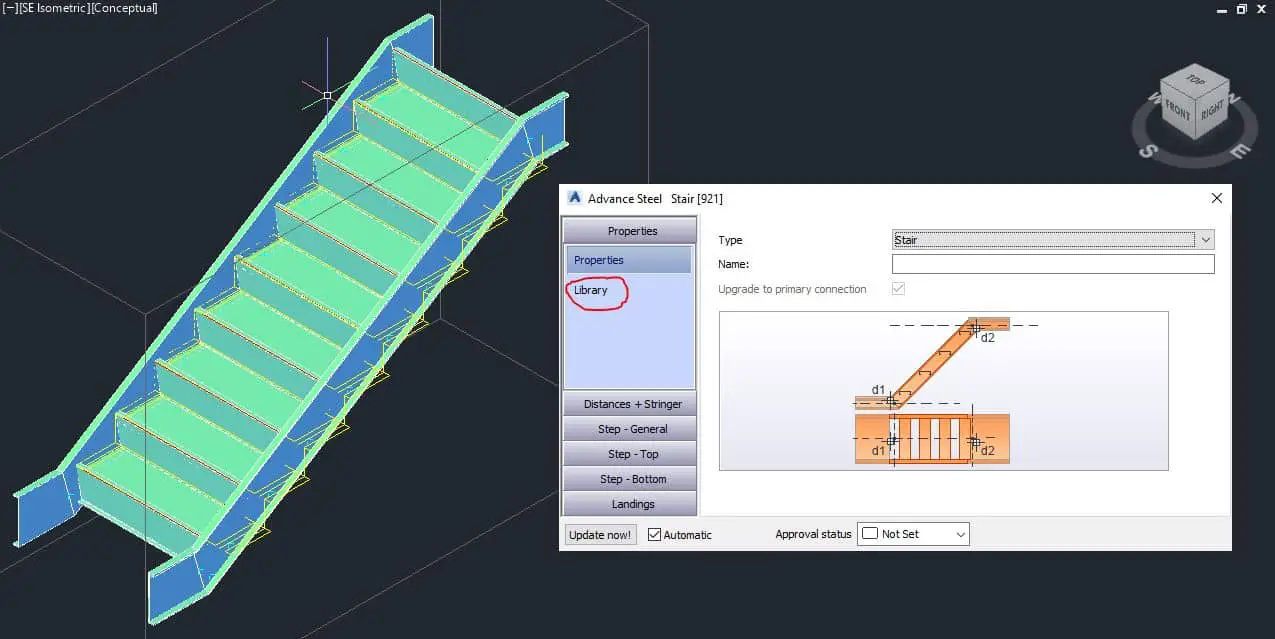
9. In the Properties section, go to Library and choose the ADA Compliant Stairs template:
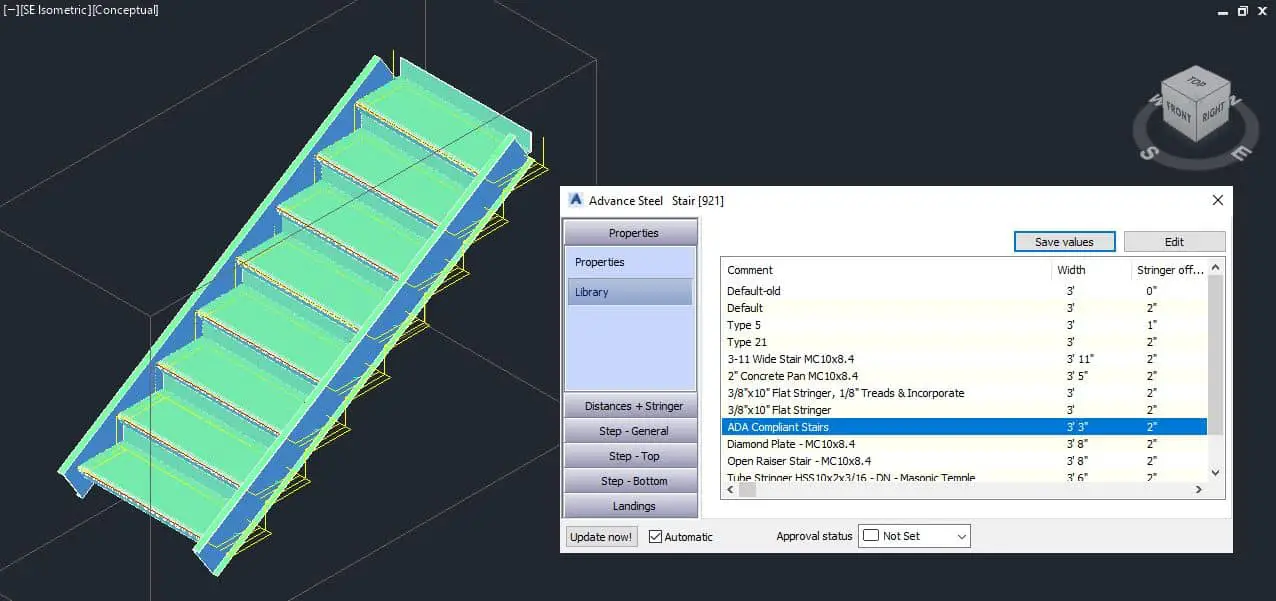
10. Before closing the dialog box, you need to adjust the width of the stair. In our case, we want a 36″ clearance between handrails, plus 1 ½″ for handrail clearance and 1 ¼″ for the handrail (on each side), which totals: 41 ½″.

11. You can close the dialog box.
12. Now you can trim the stringers if you want. You can access the UCS tools in the Advance Steel Tool Palette on the Ribbon in the Home section:

To trim the stringer, place the UCS where you want to trim the stringer and rotate the UCS so its X,Y axis becomes a Cut Plane. You can place your UCS where you need it by using the Move tool and then by using the rotating tools at the bottom:
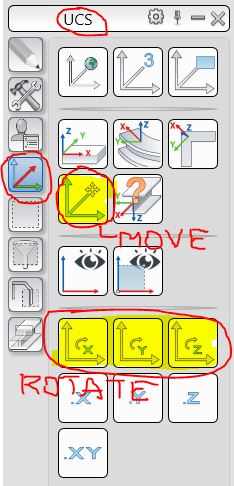
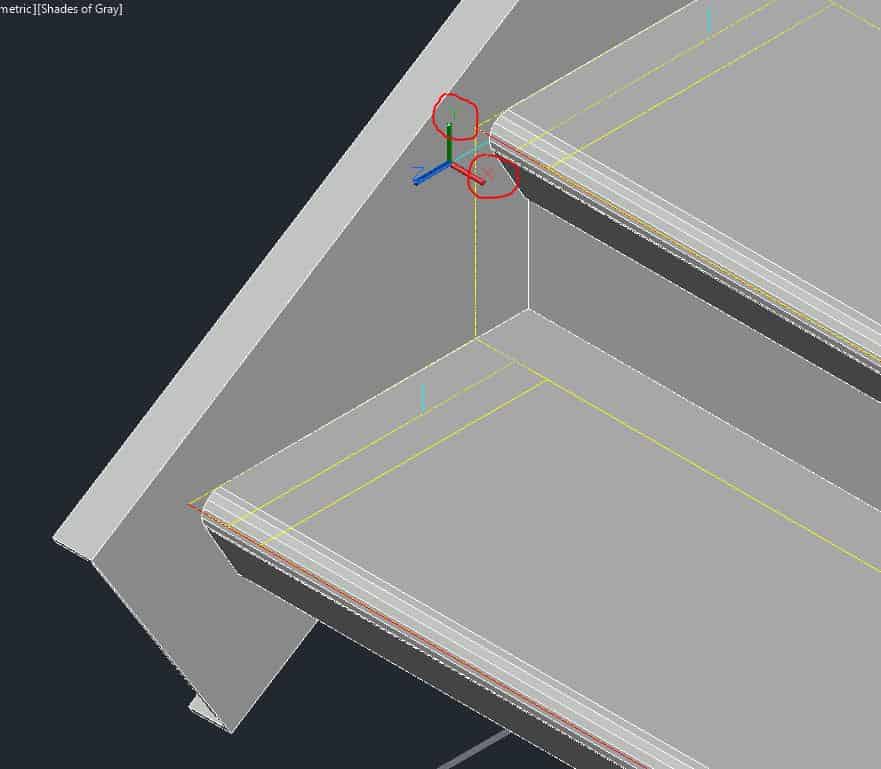
When you are satisfied with the position of your Cut Plane, go to the Features section of the Advance Steel Tool Palette located at the bottom and click on the Shorten at UCS tool. You will be asked to identify the object that needs to be cut. Select both stringers and confirm your selection by clicking Enter. Your stringers will be cut:

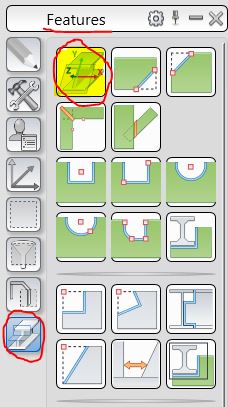
The procedure for cutting the bottom of the stringers to sit flat on the floor is similar. Notice the position and rotation of the UCS in the picture below:
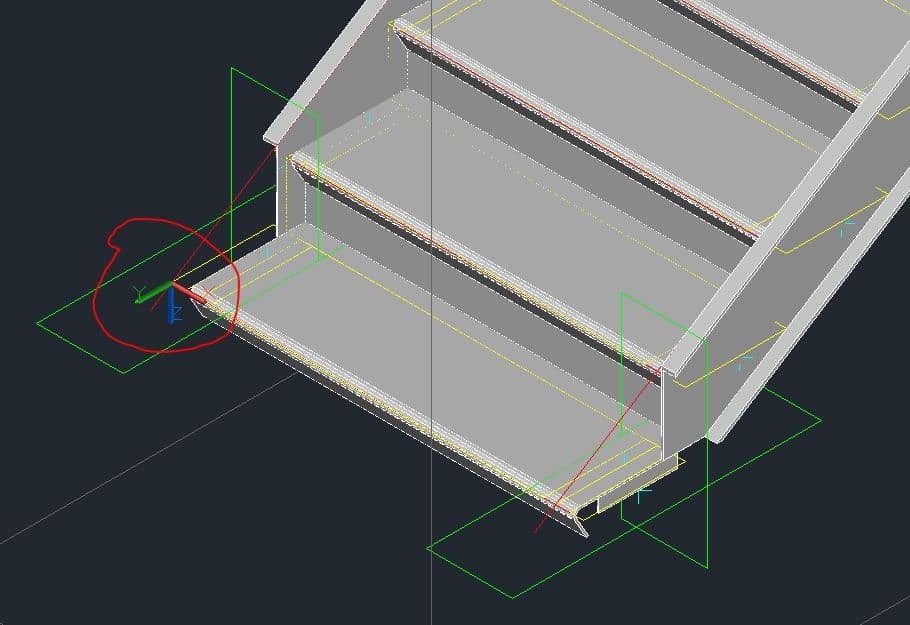
Now, let’s take care of the first raiser. We need to cut off excess material. In order to do that, we need to rotate the UCS again, so it is parallel with the face of the stringer:
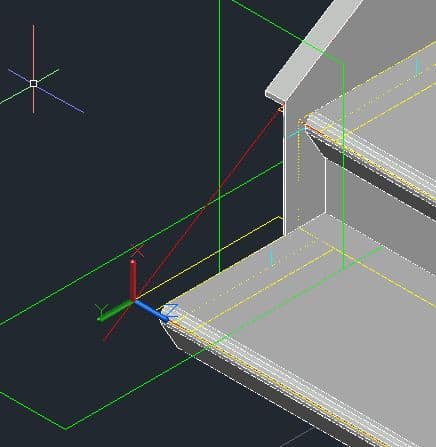
Once the UCS is positioned properly, go to Advance Steel Tool Palette > Features again and choose Rectangular Contour 2 points. You should also be in 2D Wireframe visual mode to make selecting the points easier:
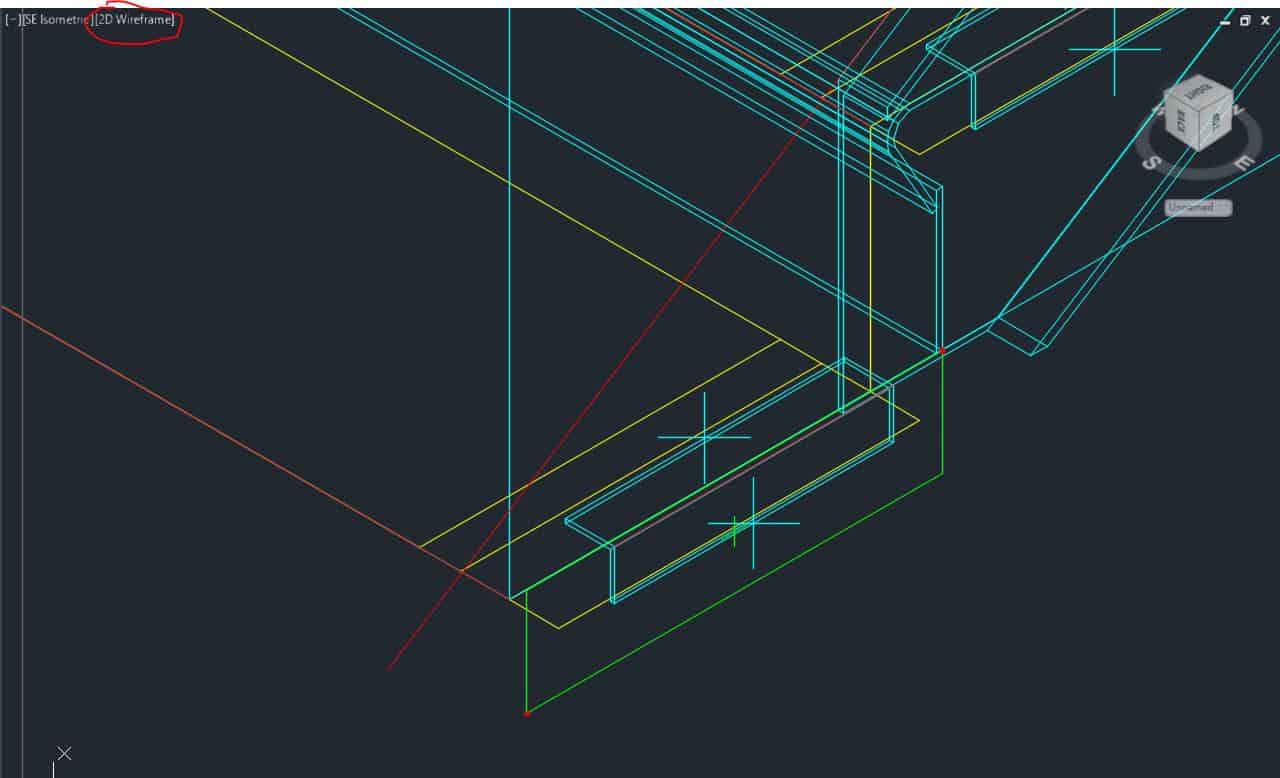
To get rid of the support angles, rotate the UCS so it is perpendicular to the stringer and again use Rectangular Contour 2 points:

13. You can use this set of procedures to make adjustments to the top of the stairs. First, apply a vertical cut to your stringers:
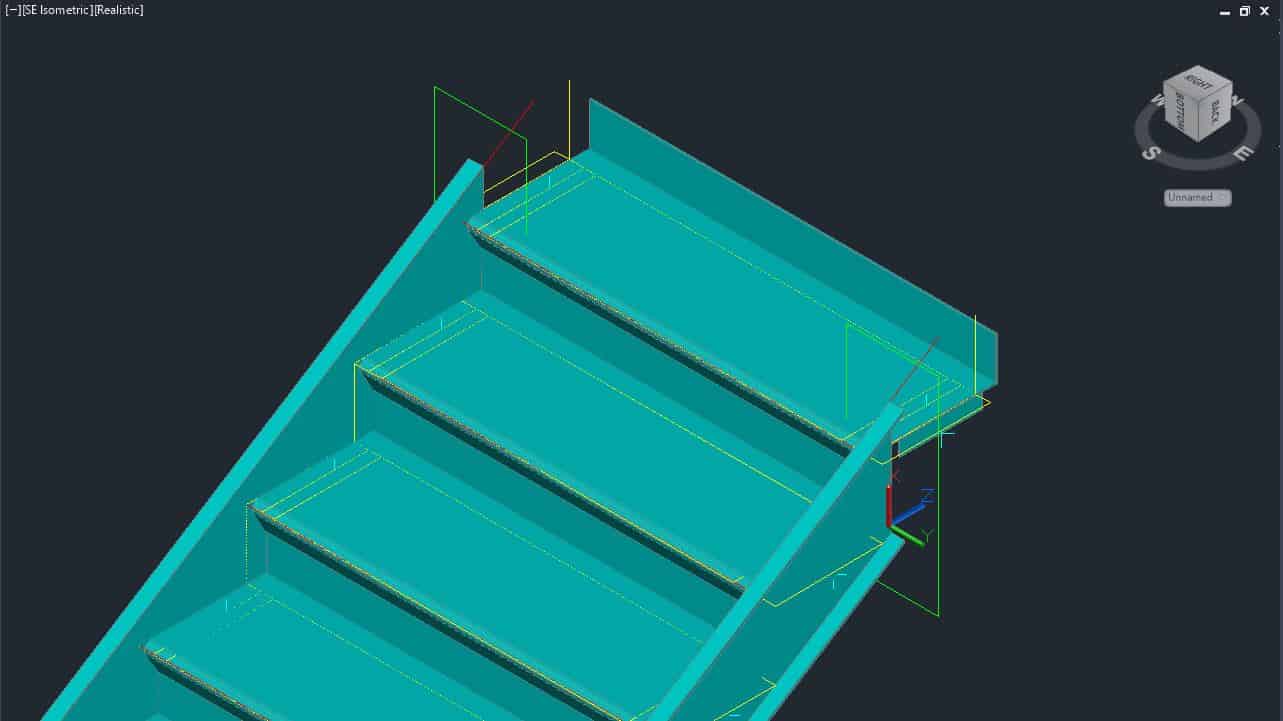
Then cut your stringers horizontally:
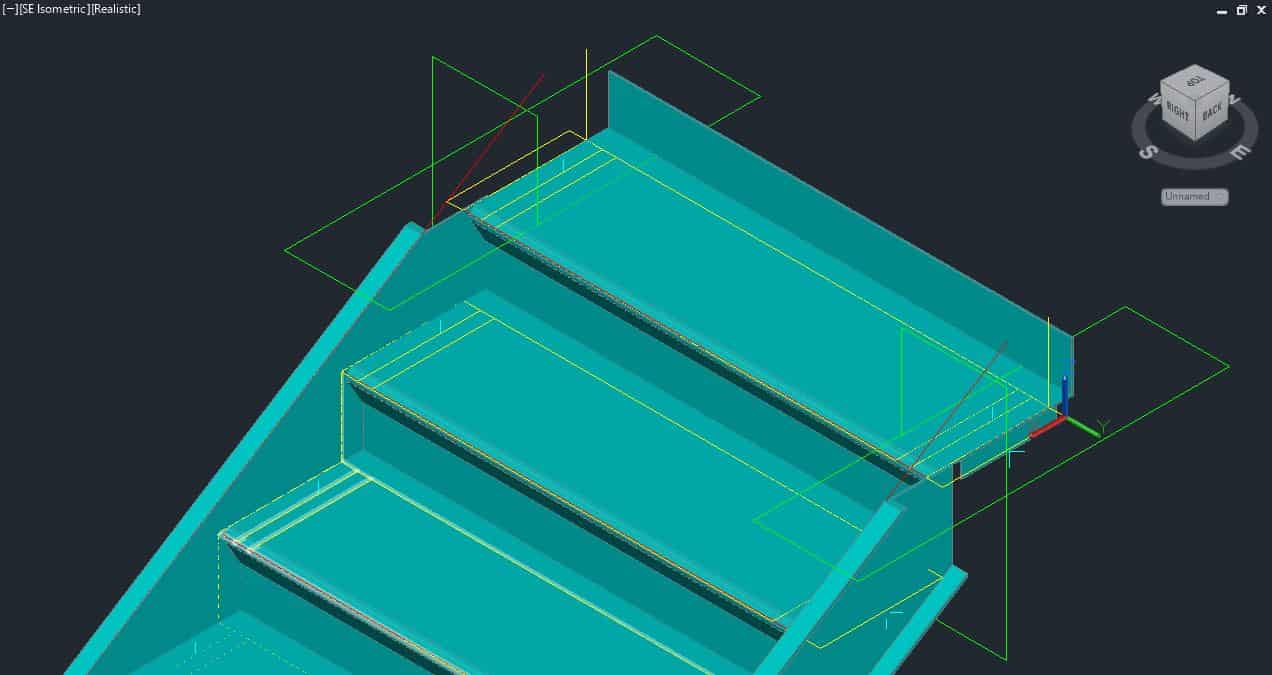
Trim the top step using the Rectangular Contour 2 points tool:
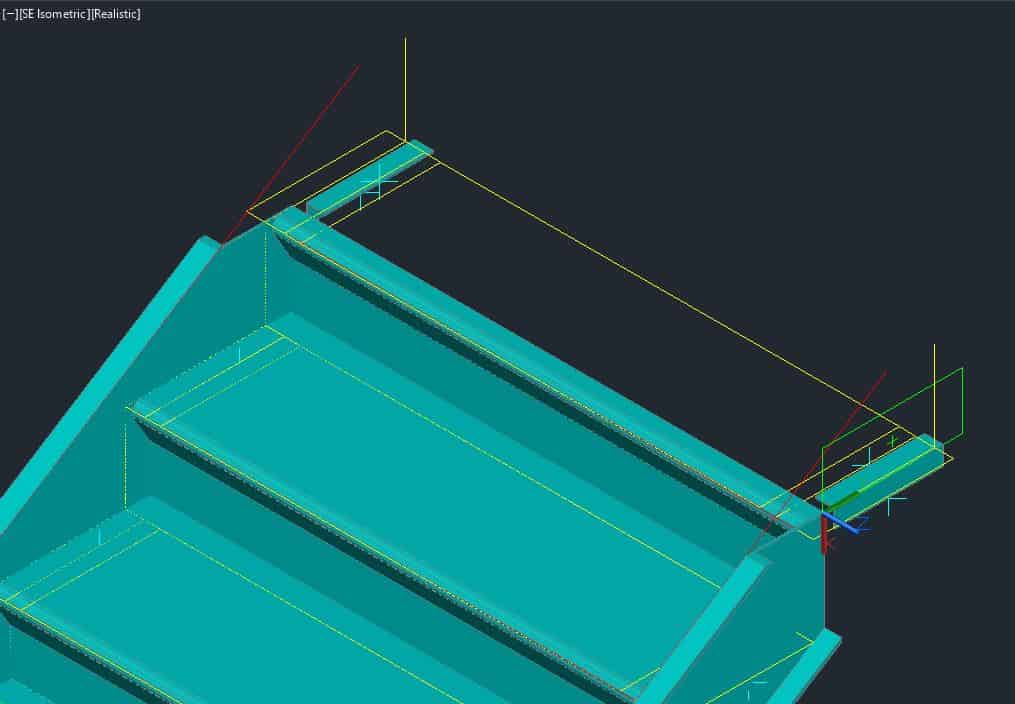
And remove the support angles using the same tool. Your stair is now completed:
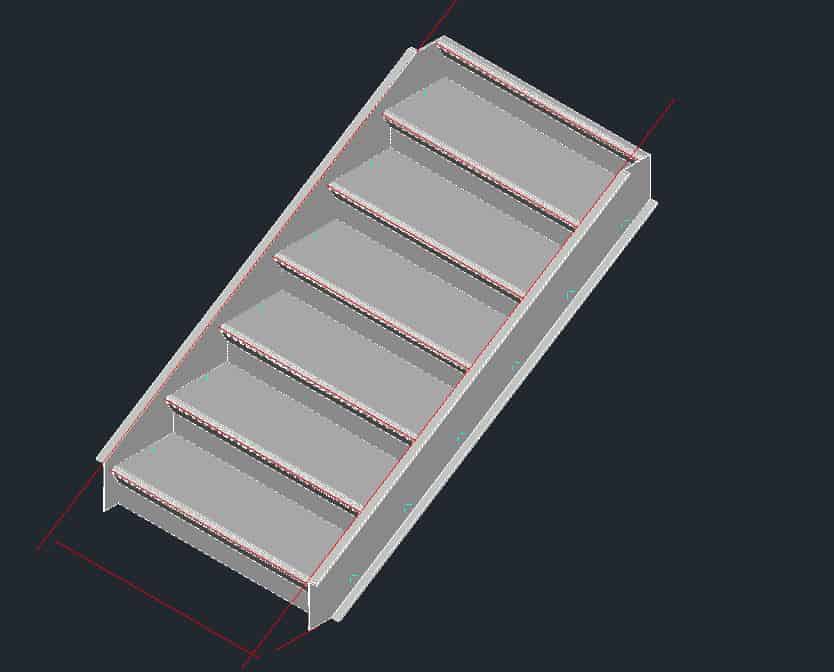
Final Adjustments
If you need, you can adjust the parameters of this stair. The most common adjustment will be to the nosing diameter. You can make those modifications by double-clicking on the gray box surrounding the stairs, and a dialog box will open.
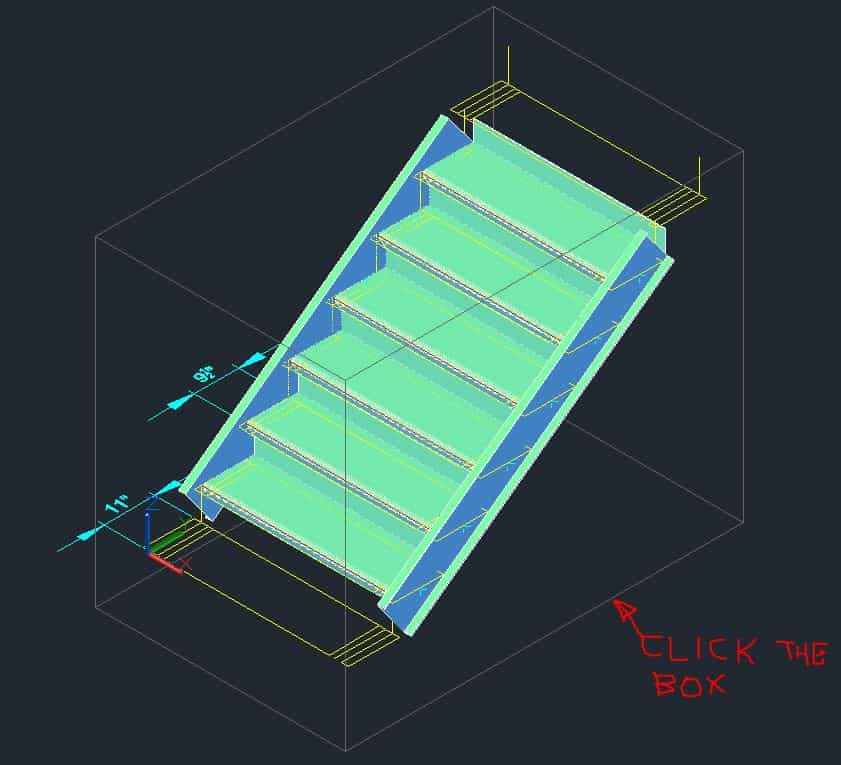
Go to Step – General > Tread Dimensions. Here you will be presented with all the options pertaining to the stairs:
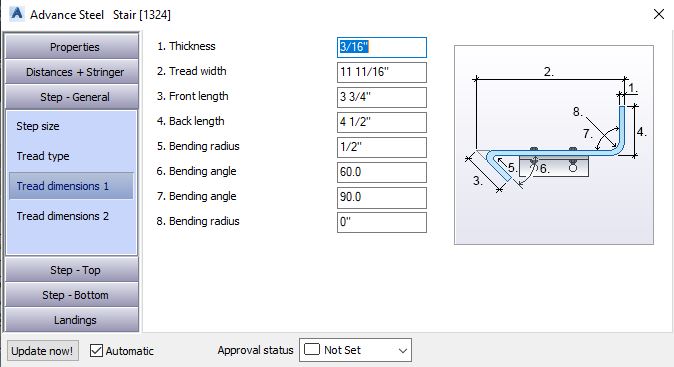
Extra Tips
If you are starting out with Advance Steel, there is one thing you need to know about stairs in this program. When you try to move your stair to different location, more than likely you will find that this is not possible. Before you might spend hours wondering what you are doing wrong, know that you are not doing anything wrong, and that Advance Steel software is not a piece of junk (something that might occur to you!). I don’t know why this bug is still a problem in version 2022, but there is simple solution: Switch your visual style to 2D Wireframe, and you can then move the stair anywhere by using the Move command:

Furthermore, if your project is especially complex, you can create the stair separately and move it to the desired position once you are happy with the results.

